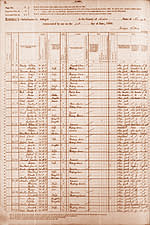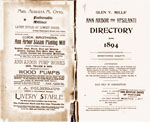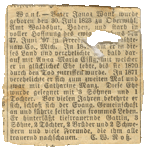 |
"The Germans established a settlement in Freedom, which adjoins us on the west, which has spread in several directions and now covers several townships, Three-quarters of the soil in Lodi Township is to-day in German hands. They have not retarded, but accelerated, the improvement of the soil. Industry and frugality are their cardinal virtues. Their strong hands have subdued and made productive the most forbidden and barren places."
—From "A History of Washtenaw County," by the Pioneer Society, early 1880s.
|
Baltimore had a large German concentration at that time, and he may have already known some of the recent transplants living there. His goal would've been to earn enough money there to purchase land and start a farm. So he probably performed day labor and worked as a yeoman, and saved what he could.
The goal would then be to work his way along the "German Belt," stretching from the mid-eastern Atlantic states through the Midwest. These states viewed Germans as good farmers and industrious residents, and offered them cheap land, which they inevitably made very valuable.
It is generally believed in the Wenk family that Ignatz had previously learned in Baden of a large enclave of 'Black Forest Swabians' that had established a community in Michigan's Washtenaw County.¹ They were concentrated there throughout Freedom Township, in the western portions of Lodi Township, and northwestern Saline Township.
But all we really know about Ignatz at this time is that he married Anna Maria Esig, almost 25 years his senior, and they settled in Freedom Township, located in the southeast section of Michigan’s lower peninsula, approximately fifty miles west of Detroit. Over 1200 German families settled there between 1830 and 1900, and two thirds of them were from the Black Forest area of Germany.² It was joked at the time that Swabians didn't mind farming the steep hills in those areas because of the steep slopes in the Black Forest region, unlike the Prussians and Hessians moving into other areas. All Germans agreed, though, that the climate was much harsher in Washtenaw than in Baden: Hotter and more humid in the summer, and much colder in the winter. But the land was cheaper than in other areas, and that superceded any other wants for these poor, disenfranchised immigrants.
 |
There are many legends concerning the origin of the word "Washtenaw." Some people think it was the name of an Indian who lived near the mouth of the Huron River, which flows through the area. Other people think it's derived from the Potawatamie or Chippewa word "wash-ten-ong," meaning "grand river."
According to Chapman's History of Washtenaw County (1881), the Huron River valley was originally home to a large Native American population. Then in 1680, the French explorer LaSalle passed eastward through this region, canoeing from Portage Lake down the Huron to Lake Erie. French fur traders and Jesuit missionaries soon followed. Michigan became a territory in 1805, and four years later Godfrey, Pepin and LaShambre established a trading post known as "Godfrey's, on the Pottawatomie Trail" in what is now Ypsilanti. Major Benjamin Woodruff purchased 160 acres of land in 1823 in Ypsilanti Township, beginning the first permanent European settlement. There were 15-30 settlers in the "County" at that time.
But more kept coming, and on January 1, 1827, Washtenaw County legally came into being. It was divided into 20 townships, with the population was nearly 1,000, spanning a distance of 30 miles east-west and 24 miles in the north-south direction. Soon, one of Michigan's first and largest German settlements was established western Washtenaw County. German immigrants from Ignatz's old home in Wuerttemberg, Westphalia, and other areas formed an independent, rural farming society, defined by the common language, heritage and functional needs created by an agricultural livelihood.
Freedom Township was formed in that county on March 7, 1834, by the Legislative Council of the Territory of Michigan, splitting off Town 3S, Range 4E from then Dexter Township. The name for the township evolved after considerable dispute, until someone expressed that a good deal of freedom should be exercised in such matters, and that name was then proposed and adopted. (The map below shows Washtenaw in 1873.)
|
|||||||||||||||||||||||||||||
Nearing his forties and having fled another war-ravaged nation, military service was probably not high on Ignatz's to-do list while settling his new farm. He was busy building a brick farmhouse, barns and multiple outbuildings, clearing fields and establishing business connections in the nearby towns of Ann Arbor, Saline, and Manchester to sell his goods. Michigan was still wild in many places. So homesteads had to be self-sufficient in order to survive. Farms like Ignatz' had to include crop fields, stables and pens, orchards, and a wood lot filled with huge wooden timber for building, with oak, walnut, maple, white and black ash, and white and red elm (Dutch Elm disease has since killed all of that, though). His home was part of the land's ecological make-up, a self-sufficient, living organism that supplied everything the occupants needed to live. (As opposed to today, when a home is just the place you sleep until you have to go to work.) Ignatz had been a Catholic in Baden, but worshipped at the Methodist church on Ellsworth Road (the church was disbanded in 1870), and belonged to the newer, more liberal Republican party, like all good "Forty-Eighters." The Party had been formally organized in July 1854 by thousands of anti-slavery activists at a convention in Jackson, Michigan, just a a few miles away from his farm.
|
||||||||||||||||||||||||||||||||||||||||||||||||||||||||||||||||||||||||||||||||||||||||||
After 10 years in the United States, Ignatz Wenk and his wife, Anna (as "Mary") appear for the first time in the 1860 census. Ignatz (spelled "Egnat Wenk") is listed as a 42-year-old farmer, with $1000 worth of property and $400 in other assets. His wife is 61! Ten years later, Ignatz is listed in the census as only 48 years old with $2600 worth of property and $660 in other assets. Meanwhile, Anna (aged 72!!!) is "keeping house."
Everyone worked hard on a frontier farm, but nobody worked harder than the wife—especially on a German immigrant's farm. She was required to work in the fields, tend to the chickens and livestock, cook and clean and sew and a myriad of other tasks. Ana Wenk did these tasks every day until she died in 1870, having lived around 72 years (the recording of births and deaths began in 1867 in Washtenaw, but nothing is listed about her death).
Ignatz was several decades younger than his late wife, with a farm to run, but with no family to help him or share the rewards with. Ignatz was still in his forties—he needed a wife, and still wanted children. And he was blessed with both in short order.
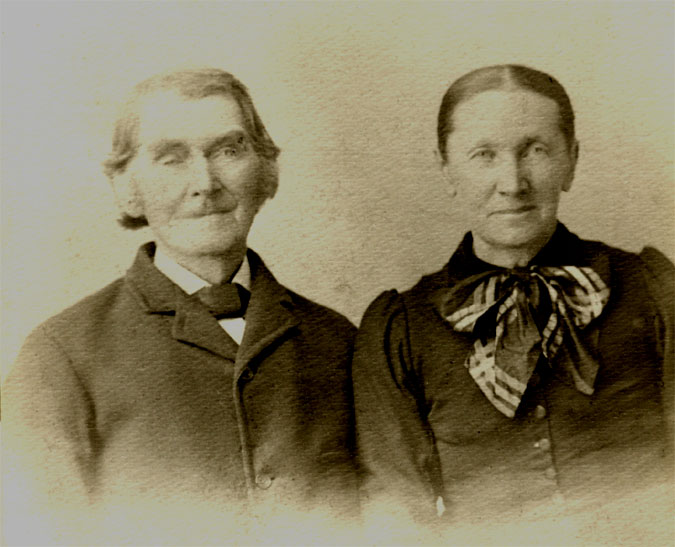 |
|
She was about 14 years younger than Ignatz, and in one of life's great little ironies, she brought to the marriage a one year-old daughter, Catherine, whom Ignatz raised as his own—just as Johan Wenk had raised him back in Baden. Catherine's true heritage is uncertain, but her origins give us another clue that Ignatz and Eva Catherine's marriage was arranged from overseas. Catherine's baptism record in Germany lists her sponsor as none other than Joseph Wenk of Baden, although the church was many miles away from the home base of our Wenk ancestors. Eva Catherine then brought her to Ignatz in America. None of the other children would know that she wasn't the natural child of Ignatz and Eva Catherine until after their deaths.
After Catherine, Ignatz and Eva raised four more children, as well:
CHILDREN OF IGNATZ WENK AND EVA CATHERINE MANZ |
|
|
|
|
|
|
|
|
|
|
|
|||||||||||||||||||||||||||||||||||||||||||||||||||
The 1880 census is a valuable tool in part because it is the only US census available for the last two decades of the 1800s. Most of the original 1890 population schedules were destroyed in a fire at the Commerce Department in 1921. Less than one percent of the schedules—records enumerating only 6,160 individuals—survived.
In this census, Ignatz Wenk is now 54, and his second wife, Catherine, is 43. He has adopted her daughter, Catherine, who is listed as an 11-year-old, born in Michigan. They have also had four more children in their first ten years of marriage: John (age 9), Joseph (age 7), Martin (age 5), and Louisa (age 2).
Ignatz' half-brother, Joseph Wenk, a tailor, had emigrated to the the German Settlement in Washtenaw, and is also listed with his family on this census page, below Ignatz. Joseph had moved from Baden to nearby Rogers Corners between 1867-70, after the Civil War, where he worked as a tailor (although the brothers probably weren't as close as you'd expect—Ignatz left Germany when Joseph was only five years old).
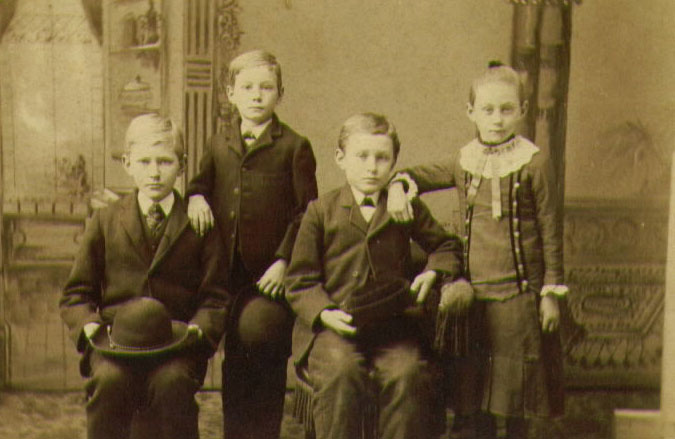 The children of Ignatz and Eva Catherine Wenk, circa 1890: John, Martin, Joseph and Louisa. |
|
|||||||||||||||||||||||||||||||||
But the family didn't only work. Holidays were special times in the Wenk household—especially Christmas. Catherine would bake all kinds of cookies like Liebkuchen and Springele and a bread called Snitzbrodt. Decorations for the tree were homemade, like popcorn and cranberries chained together along the branches on string, dried apples, and real candles which were lit at night.²
So life was hard on the Ignatz Wenk farm, but it was a truly good life, and far above what had been available to him in Baden.
Ignatz Wenk passed away in 1897. Ignatz' obituary, printed in German in Ann Arbor's Neue Washtenaw Post, reads, "When he died, he left three sons, two daughters, two sisters, two brothers and a lot of friends." He's buried in the Freedom Emanuel Evangelical Memorial Cemetery. His eldest son, John, took over the farm, while sons Joseph and Martin had to go into debt to start their own homesteads.
|
|
||||||||||||||||||||||||||||||||||||||||||||
Ignatz Wenk was gone, but Michigan kept growing. The 1900 Federal Census lists the state population at 2,420,982. Ignatz's sons, Joseph and Martin Wenk, are working the farm for 69-year-old Catherine, who interestingly is listed as speaking no English. Children of German immigrants in the county during the first decade of the 1900's learned English in public school (which they called "English School"), but regularly spoke German at home and in their churches and church schools ("German School").
Catherine now ran the family. She was a very frugal person. She cooked on a huge black range, fueled by wood, and wasted nothing. She made many kinds of soups for the family, including liver dumpling, vegetable beef, and noodles called "knifle" supplemented her meals. She and her daughters baked bread every other day, made their own butter, and sold both butter and eggs. There was no refrigeration, so meat was smoked or dried in order to preserve it. And she stocked it in the cellar, along with canned fruit and vegetables, for meals during the long winters. In the fall, hickory nuts were collected and dried in the attic, to be used in hickory nut cake with caramel frosting.
 Eva Catherine Wenk with some of her descendants in 1910. Front Row: Helen Goetz, Edna Goetz, Ella Lucht, Edgar Wenk, Eva Goetz. Second Row: Louisa Goetz, Bertha Hirth (worked for the Goetz'), Katie Lucht, Catherine Manz Wenk, Olga Wenk (holding Wilbur Wenk). Third Row: Mr. Blass, Joseph Wenk, Elsa Goetz, Frederick Lucht, Fred Lucht Jr., Otto Goetz, Carl Thrum. |
By 1900, the tide of German immigration in Washtenaw had slowed, as the county's farmsteads and families became more established and prosperous. The value of the land went up, and German immigrants moved to less settled regions with cheaper land, such as Wisconsin, Minnesota, and the Dakotas. In the coming decades, wars with Germany would shrink the influx of immigrants and the standing of Germans in the United States—but it would also tighten the bonds of the Washtenaw Germans and slow their assimilation.
Fifty years before, the Wenk family had come to Michigan in the person of a poor, 25-year-old Swabian refugee from Baden, labeled a bastard on his immigration papers. His descendants, now in the dozens, were hard-working and industrious, and were deeply embedded in the Freedom and Lima townships, where they started a new heritage. Among them was our next ancestor...
 |
NOTES ON THIS PAGE:
¹—"From Germany to Washtenaw County: A Story of a German Immigrant and his Descendants in America," by Kurtis McDonald, 1997.
²—"A History of the German settlers in Washtenaw County" by Dale R. Herter and Terry Stollsteimer, 2007.
³—"Stories from the Family of Ignatz Wenk," by Pat Simeck, Martha Hause and Kurtis McDonald, 2006.
TOP PHOTO: Ignatz's Farm, early 1900's.
|
CHAPTER 1: WENKS FROM FROM BADEN TO WORSE, 1705 - 1849 CHAPTER 2: IGNATZ WENK, 1850 - 1997 CHAPTER 3: MARTIN WENK, 1876 - 1962 CHAPTER 4: ERWIN WENK, 1910 - 1982 CHAPTER 5: THE WENK FAMILY TODAY, 1940 - PRESENT
APPENDIX A: WENK FAMILY REUNIONS, 1923-PRESENT APPENDIX B: CENSUS REPORTS, 1870 - 1950 APPENDIX C: FAMILY TIMELINE, 1700-PRESENT |
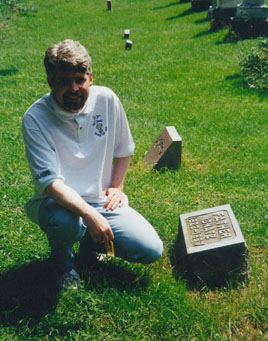
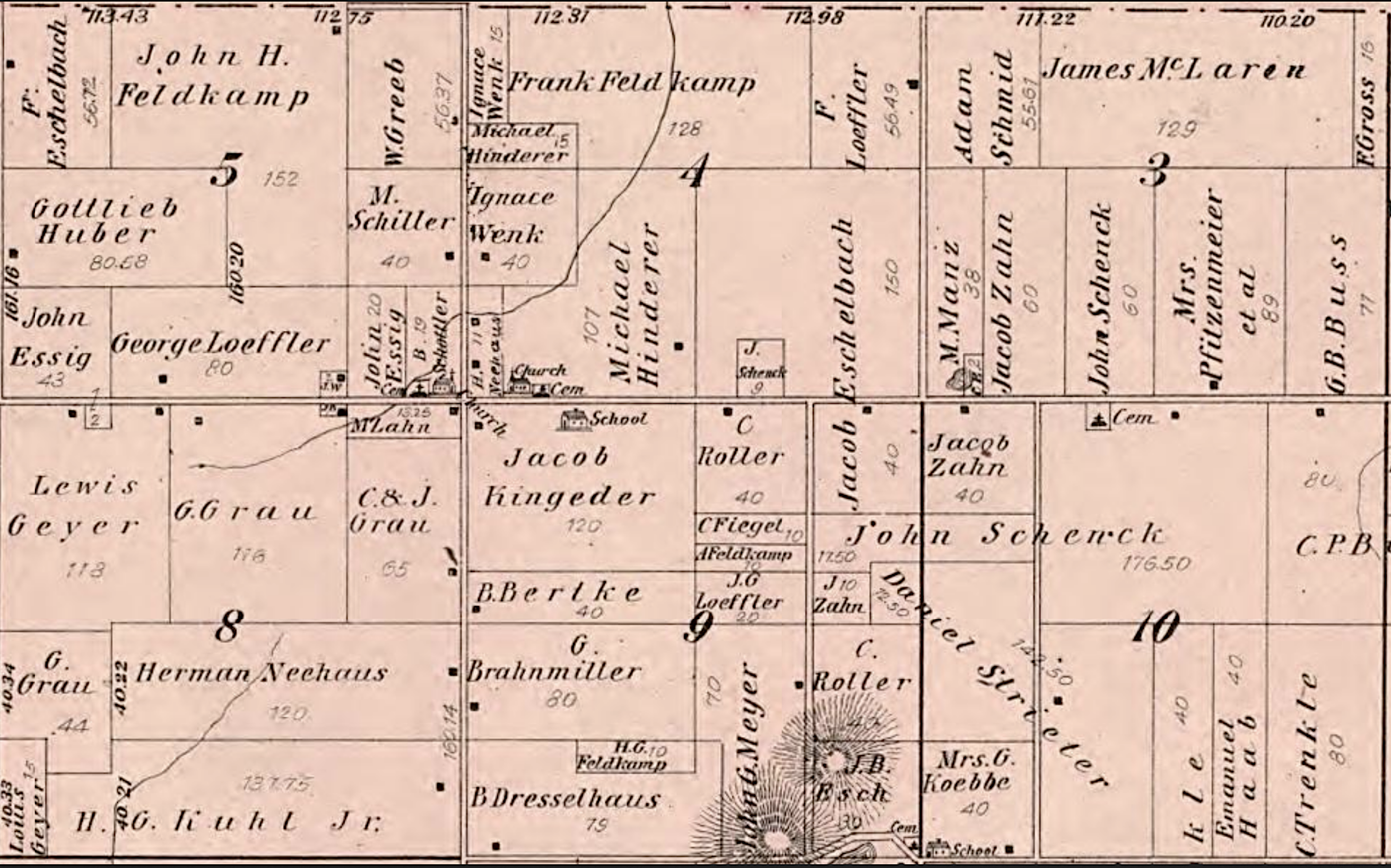
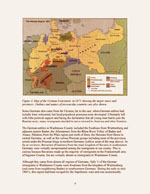
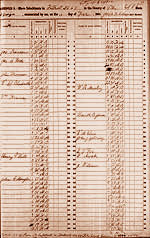

.gif)





